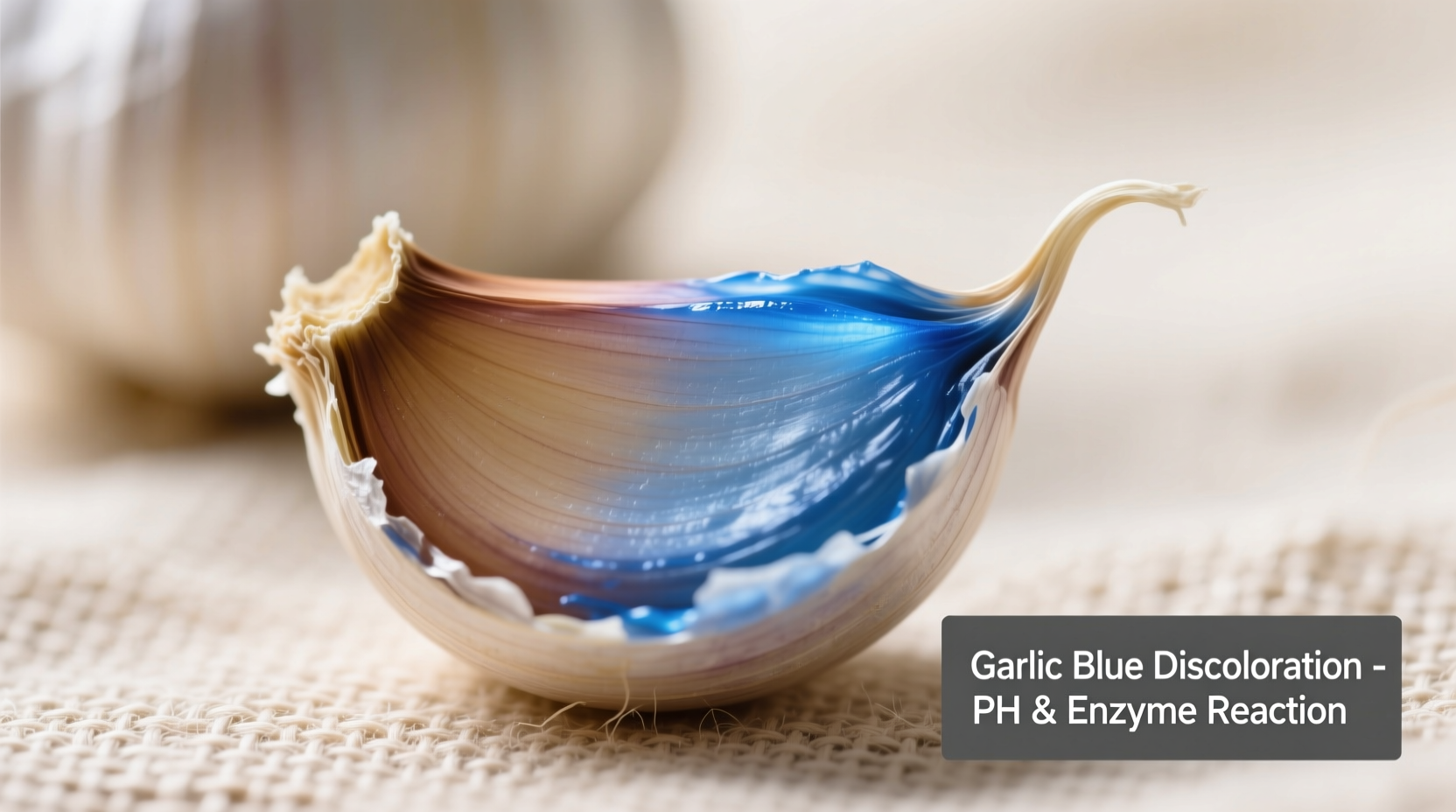Have you ever sliced garlic only to find it mysteriously turning blue or green? This surprising kitchen phenomenon alarms many home cooks, but understanding the science behind blue garlic eliminates unnecessary food waste and unlocks creative culinary possibilities. Whether you're meal prepping, making pickles, or crafting aioli, knowing why garlic turns blue helps you control this reaction—either preventing it or intentionally creating vibrant blue garlic for visual appeal.
The Chemistry Behind Blue Garlic: More Than Just a Color Change
Garlic contains sulfur-containing compounds called thiosulfinates that create its distinctive aroma when cut or crushed. When these compounds interact with amino acids and acids (like vinegar or lemon juice), they form anthocyanins—water-soluble pigments that appear blue or purple. This same reaction creates the vibrant colors in red cabbage and blueberries.
According to research from the USDA National Institute of Food and Agriculture, the specific trigger occurs when garlic's enzyme alliinase interacts with trace amounts of copper (often from water or cookware) in acidic environments. The resulting complex, called alliin-derived pyrrole, creates the blue hue. This reaction typically occurs between pH 4-7, explaining why it happens with vinegar-based recipes but not in neutral dishes.
| Normal Garlic | Blue Garlic |
|---|---|
| White or off-white color | Blue or blue-green hue |
| pH neutral environment | Acidic conditions (pH 4-7) |
| No copper exposure | Trace copper present |
| Typical in fresh preparations | Common in pickling or vinegar-based recipes |
When Blue Garlic Happens: Common Kitchen Scenarios
Understanding why would garlic turn blue requires recognizing these typical situations:
- Garlic in vinegar-based recipes – Pickled garlic often turns blue due to prolonged acid exposure
- Cooking with cast iron or copper pans – Trace metals accelerate the reaction
- Using hard water – Higher mineral content provides copper catalysts
- Combining with acidic vegetables – Onions or tomatoes can create the right pH environment
The University of California Agriculture and Natural Resources confirms this reaction occurs most frequently during pickling when garlic sits in vinegar for extended periods. Their food science department notes that younger garlic ( harvested in spring) contains higher concentrations of the reactive compounds, making it more prone to color changes.
Is Blue Garlic Safe? Addressing Food Safety Concerns
Many home cooks immediately discard blue garlic, fearing spoilage. However, the FDA Food Safety Guidelines clearly state that this color change represents a harmless chemical reaction, not bacterial growth or spoilage. The distinctive garlic flavor remains intact, and the nutritional profile stays unchanged.
Key indicators that blue garlic is safe:
- No foul odor (should still smell like garlic)
- No slimy texture (should feel firm)
- No mold growth
- Color change occurs gradually during preparation

Preventing Unwanted Blue Garlic
If you prefer traditional white garlic in your dishes, these practical techniques help prevent the color change:
- Blanch garlic first – Dip cloves in boiling water for 30 seconds to deactivate enzymes
- Avoid copper cookware – Use stainless steel or glass containers for acidic preparations
- Add acid later – Incorporate vinegar or lemon juice after cooking instead of during
- Use older garlic – Mature bulbs have lower reactive compound concentrations
Creating Blue Garlic Intentionally for Culinary Artistry
Chefs increasingly use this reaction deliberately for visual appeal. To create vibrant blue garlic:
- Submerge peeled cloves in rice vinegar for 24-48 hours
- Add a copper coin to the jar (food-safe copper)
- Maintain temperature between 68-77°F (20-25°C)
- Use fresh, young garlic for most dramatic results
This technique works particularly well for garlic turns blue in vinegar applications like pickled eggs, decorative garnishes, or colorful aioli variations. The blue pigment actually intensifies when exposed to light, creating stunning visual effects in transparent dishes.
When Blue Garlic Signals a Problem
While most blue garlic is perfectly safe, these rare scenarios warrant caution:
| Safe Blue Garlic | Potentially Unsafe Garlic |
|---|---|
| Blue only in acidic areas | Entire clove blue with fuzzy growth |
| Firm texture | Soft, mushy texture |
| Garlic aroma | Sour or rotten smell |
| Develops during preparation | Blue before cutting |
True spoilage involves mold growth and texture changes, not just color. If your garlic shows multiple warning signs from the right column, discard it following USDA Food Safety Inspection Service guidelines.
Key Takeaways for Home Cooks
Understanding why garlic turns blue transforms a confusing kitchen mystery into either a preventable situation or a creative opportunity. Remember these essential points:
- The blue color comes from natural anthocyanin pigments, not spoilage
- Acidic conditions combined with trace metals trigger the reaction
- Blue garlic remains safe to eat with unchanged flavor profile
- Blanching prevents unwanted color changes in most recipes
- Young garlic produces more dramatic blue hues for intentional applications
Next time you notice garlic turns blue when cooking, you'll know exactly what's happening and how to respond—whether that means adjusting your technique or embracing the beautiful blue hue in your culinary creation.











 浙公网安备
33010002000092号
浙公网安备
33010002000092号 浙B2-20120091-4
浙B2-20120091-4